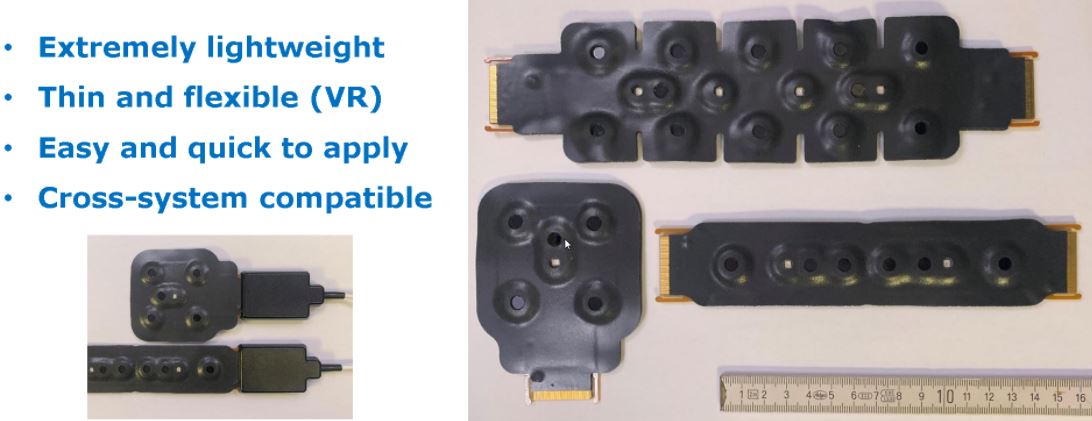
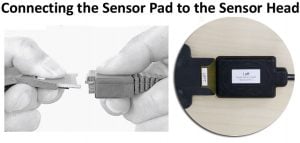
Sensor cables are included with the fNIR Imaging System and can also be ordered separately.
Photo-detectors: Silicon photodiode with integrated trans-impedance preamp
Photo-emitters: 730 nm/850 nm dual wave-length LED
Material: silicone rubber over-molded
Sensor Use with Young Subjects
When using 5 or 6 opcode sensors on young subjects, LED electrical current to the Main and Reference optodes must be adjusted down to adequately cover the A/D range in the provided COBI software. Source detectors are set at 2.5 cm for pediatric subjects but may go to 2 cm for infant studies. Settings need to be reviewed for each participant since factors such as bone density, skin color, perspiration, etc. may play a role. Aim for the middle of the A/D range by adjusting LED Currents and Gain, trying to keep gain as close to 1 as possible.

Cleaning fNIR Imagers and Sensors
All generations and models: Use an alcohol-based antiseptic to gently wipe the surface of the fNIR Imager unit or sensor; never use peroxide-based antiseptics.
For older Imagers or the test sensor
PART # | Channels | Detectors | Emitters | Inter-optode Distance | Interface
RXFNIR-4 Split | 4 | 4 | 2 |25 mm | all Imagers
FNIR-PHANTOM | mimics optical properties of brain tissue to test sensor performance |≥ Imager 1100
Product Family
Product Type
Platform Options
Best Value
Lowest price in the industry with cutting edge engineering, the highest quality material, and robust data collection
Shortest Prep
Easy sensor application, calibration, and baselining shorten prep time & learning curve
Least Intrusive
18-optode sensor weighs ~32 grams (1 oz.)







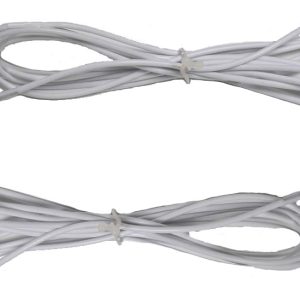
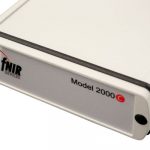
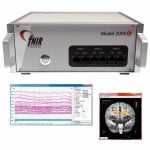
Stay Connected